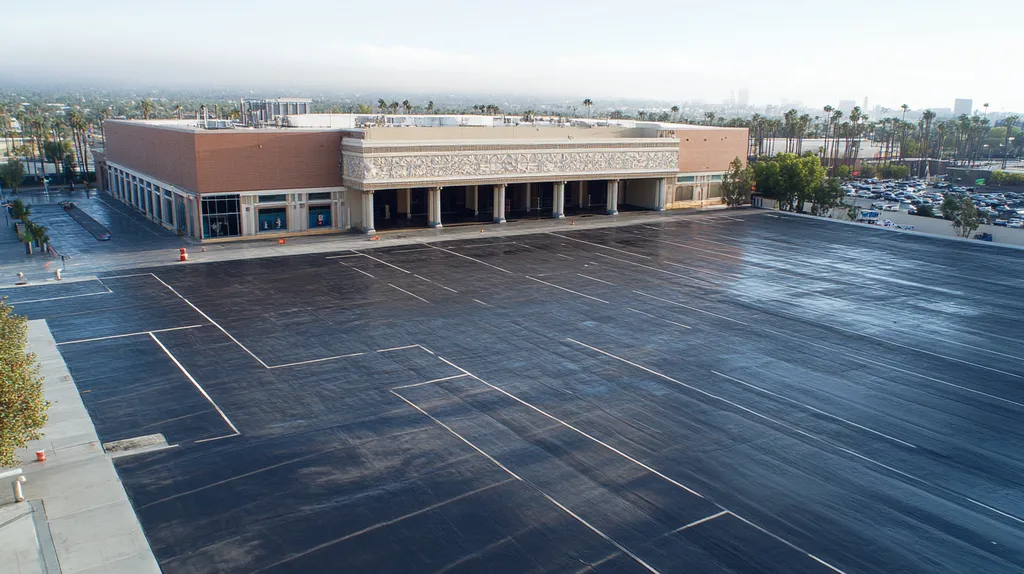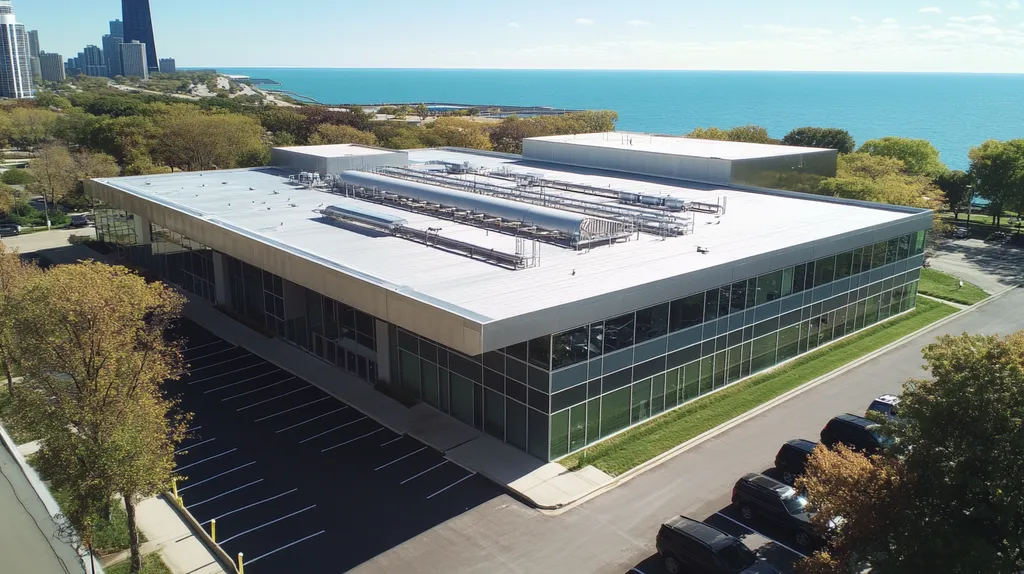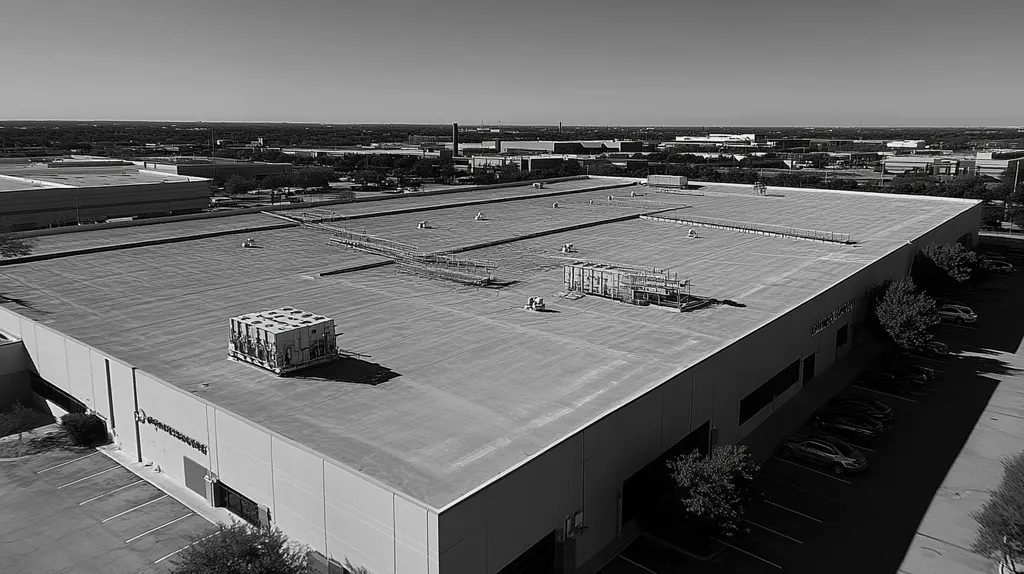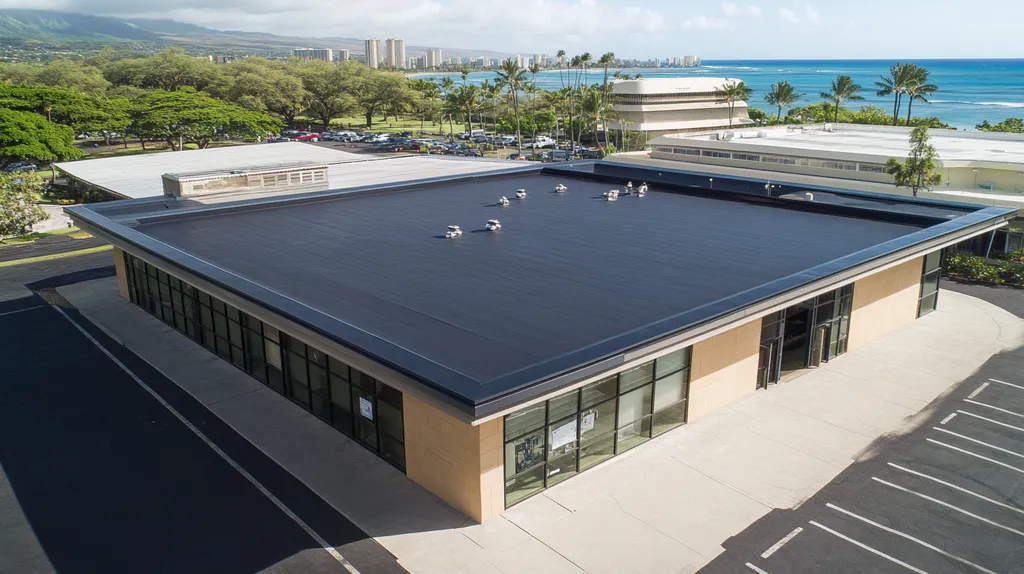In today’s commercial buildings, inefficient roof lighting silently drains profits, with the Department of Energy estimating wastage of up to 30% in energy costs across facilities nationwide. This oversight translates to thousands in preventable expenses annually.
From aging fixtures to misaligned systems, the challenges of optimizing roof lighting efficiency can seem daunting. However, understanding the fundamentals of modern lighting solutions opens doors to substantial savings.
This comprehensive guide illuminates the path toward cost-effective roof lighting, breaking down complex concepts into actionable insights for property owners and facility managers.
SECTION 1: THE BASICS EXPLAINED
Efficient roof lighting is not merely a modern upgrade; it’s a crucial element in slashing operational costs for commercial properties. Poor lighting can lead to ballooning energy bills and a workplace that’s anything but productive. As the U.S. Department of Energy reveals, implementing thoughtful lighting adjustments can cut energy use by as much as 50%. Grasping the basics of roof lighting sets the stage for substantial savings and boosts overall facility performance.
What It Is (In Plain Language)
Roof lighting refers to the methods for illuminating a building from above, serving essential roles in aesthetics and utility. Common options include skylights, light tubes, and roof-mounted LED systems, each leveraging natural or artificial light to brighten interiors.
In simple terms, effective roof lighting equips spaces—like warehouses and offices—with ample illumination, enhancing both visibility and safety. This bright environment promotes productivity while reducing the dependence on electric lights during the sun-soaked hours of day.
Innovative technologies can efficiently capture and distribute sunlight, paving the way for energy-efficient solutions. More commercial structures are integrating these advancements today, often reaping quick returns on their investment.
Ultimately, roof lighting is indispensable for optimizing energy usage, aligning perfectly with the sustainability initiatives many organizations prioritize.
Why It Matters (To Your Building)
The importance of efficient roof lighting is truly monumental. Beyond simply looking good, it directly impacts operational efficiency and energy expenses. Poorly lit facilities face the risk of escalating electricity costs, sometimes adding up to thousands of dollars each year.
Moreover, inadequate lighting doesn’t just hurt the bottom line; it jeopardizes worker productivity and safety. A well-lit environment fosters alertness and minimizes accidents that are all too common in shadowy areas. Hence, investing in effective lighting solutions directly links to enhanced worker satisfaction and performance.
In an era of heightened scrutiny over environmental impacts, adopting efficient roof lighting solutions is a meaningful step toward lowering a building’s carbon footprint. Not only does this comply with regulatory standards, but it also attracts the attention of environmentally savvy clients and customers.
Within this landscape, reassessing your roof lighting strategy emerges as both a financial and ethical necessity.
How It Works
Understanding the mechanics of roof lighting empowers property owners to make savvy choices. Natural lighting systems utilize design principles tailored to optimize the influx of sunlight through specialized openings, offering not just illumination but also ventilation—boosting comfort along the way.
On the other hand, advancements in artificial lighting—specifically LED technology—have transformed the landscape with enhanced efficiency and longevity. LED fixtures consume less energy and generate less heat, making them a smart choice for long-term savings.
Furthermore, the rise of smart lighting technology allows systems to adjust based on natural light availability, leading to further energy conservation. These systems can be managed remotely, giving property managers the agility and control over lighting they need.
Ultimately, understanding these intricacies enables facility managers to deploy more effective roof lighting solutions tailored to their unique demands. By wise integration of both natural and artificial lighting, they can elevate efficiency and achieve remarkable cost savings.
SECTION 2: PRACTICAL APPLICATIONS
Efficient roof lighting isn’t just an embellishment; it’s an essential tool for commercial spaces aiming to cut costs and bolster energy performance. Research reveals that businesses can trim their lighting expenses by as much as 50% by embracing modern, energy-efficient lighting solutions. Grasping the nuances of effective roof lighting can unlock substantial financial and operational advantages. This section will delve into common uses and examples, identify critical scenarios for implementation, and explore the interplay with other building systems.
Common Uses & Examples
Roof lighting serves various commercial settings, from bustling warehouses to high-tech manufacturing facilities. Skylights and solar-powered roof lights are popular applications that harness natural sunlight. These options not only brighten spaces but also significantly decrease dependence on artificial lighting during daylight hours.
In expansive retail environments, integrating LED lighting with smart controls enables targeted illumination, enhancing aesthetics while boosting energy efficiency. For instance, a supermarket outfitted with LED fixtures can quickly recoup its investment through reduced energy bills.
Moreover, clever lighting designs often incorporate reflective surfaces that amplify light distribution, creating bright environments without unnecessary energy consumption. Investing in reflective roofing materials can further enhance effectiveness when paired with roof lighting systems.
These applications highlight the essential role roof lighting plays in enhancing functionality and furthering sustainability in contemporary commercial spaces.
When You Need It Most
Identifying when to deploy efficient roof lighting is crucial for reaping maximum benefits. The necessity is particularly evident in expansive, open areas with high ceilings, where conventional lighting fails to provide adequate coverage. During peak operation hours, sufficient lighting is critical for ensuring both safety and productivity.
Seasonal changes can also impact natural light availability, necessitating periodic reassessment of lighting strategies. Facilities in northern regions, for example, may find themselves in need of enhanced lighting solutions during the long, dark winter months.
Additionally, industries subject to strict compliance standards, such as food production or pharmaceuticals, must prioritize effective lighting to meet safety regulations. Neglecting this can lead to costly fines and disruptive operational setbacks.
Ultimately, understanding when efficient roof lighting is most critical can profoundly affect compliance and operational efficiencies.
Interactions With Other Systems
Roof lighting doesn’t function in isolation; it interacts seamlessly with various building systems to bolster overall efficiency. For instance, linking roof lighting with advanced HVAC systems can optimize energy use—less reliance on artificial lighting means reduced heat output, which can inform HVAC operations.
Smart building technologies further enrich these interactions, enabling real-time monitoring of both lighting and ventilation systems. This presents an opportunity for significant energy savings through data-driven adjustments based on occupancy and natural light levels.
Additionally, pairing roof lighting with energy management systems allows for the identification of consumption patterns, facilitating informed decisions regarding future upgrades.
Comprehending the relationships between roof lighting and other building systems encourages a more integrated approach to energy management and operational efficiency.
SECTION 3: KEY TERMINOLOGY DECODED
Understanding the core terminology surrounding commercial roof lighting is not just beneficial; it’s essential for making smart decisions. Misunderstanding terms can lead to costly errors when selecting materials and systems. For example, failing to comprehend lumen output can result in poorly lit spaces, which could hinder productivity and jeopardize safety. In today’s competitive landscape, clear communication using the correct terminology is vital for negotiating contracts and grasping specifications. This section aims to clarify essential terms, enabling property owners and facility managers to make educated choices.
Essential Terms Explained
Grasping key lighting terms is critical for effective dialogue and smart decision-making. Take “lumen,” for instance. It measures the total light output from a fixture, meaning a higher lumen count typically means a brighter space. Commercial settings usually require around 800 to 1,000 lumens per fixture to achieve a balance of safety and efficiency, creating a workspace that’s both bright and energizing.
Another term to know is “luminaire,” which encompasses the entire lighting unit, bulb and fixture included. The selection of the appropriate luminaire profoundly impacts both energy efficiency and overall performance. It’s essential for facility managers to be mindful of the type of luminaire suited for their specific needs.
“Color temperature” is also crucial, as it influences the ambiance and functionality of a workspace. Measured in Kelvin (K), lower values like 2700K-3000K produce a warm, inviting light, whereas higher values (5000K-6500K) yield a cooler, vibrant daylight effect. Familiarity with these concepts assists in making aesthetically pleasing and functional lighting decisions.
Being well-versed in these terms equips property owners to effectively engage with lighting suppliers, ensuring better outcomes through informed selections.
Industry Jargon Translated
Commercial roofing professionals often employ language that can mystify those outside the industry. For example, “efficacy” refers to the light output efficiency relative to energy consumption, measured as lumens per watt (lm/W). Higher efficacy ratings indicate more light delivered per watt used, a significant factor for energy conservation.
Awareness of these terms not only enhances dialogues with lighting professionals but also helps in assessing product choices, leading to improved roof lighting efficiency.
Measurement & Units Simplified
Measurements used in roof lighting lay the groundwork for understanding and comparison. For instance, watts gauge energy consumption, while lumens quantify brightness. It’s crucial for property owners to familiarize themselves with these units to accurately assess product specifications.
Another important aspect is understanding square footage. The necessary illumination level can vary depending on area size. For general office use, a range of 100 to 200 lux is typically recommended, ensuring lighting aligns with the building’s functional needs and energy use.
In discussions about energy efficiency, “smart lighting” systems are gaining traction. These innovative systems utilize sensors and controls to optimize lighting based on occupancy or natural light availability. Adequate knowledge of their benefits can significantly lower electricity expenses.
Mastering these measurements empowers managers to ensure their lighting strategies are not just practical but also financially savvy—leading to rewarding savings over time.
SECTION 4: DECISION FACTORS
Making informed decisions about roof lighting is crucial for property owners aiming to enhance operational efficiency and reduce costs. With potential energy savings reaching up to 40% according to the U.S. Department of Energy, overlooking key decision factors can lead to wasted resources and unnecessary expenses. By scrutinizing cost considerations, performance trade-offs, and lifespan factors, property managers can unlock the full potential of their lighting systems—ensuring both efficiency and savings over the long haul.
Cost Considerations
Financial factors weigh heavily when it’s time to choose roof lighting options. Many property owners shy away from high-efficiency solutions due to perceived high upfront costs. Yet, the reality is that investing in such systems can yield significant energy savings over the years.
Think about it: traditional lighting often demands frequent bulb changes and leads to inflated electricity bills. Energy-efficient alternatives, especially LED systems, may require a larger initial investment but pay off with lower operational costs and extended lifespans.
To sweeten the deal, many utility companies offer incentives and rebates for upgrading to energy-efficient lighting, allowing owners to lighten the financial load. These rebates can substantially offset initial costs, making energy-efficient lighting a savvy financial choice.
Ultimately, savvy property owners should focus on the total cost of ownership—far beyond the initial outlay—to make smart, long-lasting roof lighting decisions.
Performance Trade-offs
Performance is a central consideration when selecting roof lighting systems. Each lighting technology has its perks, from brightness levels to energy efficiency and lifespan. Some options might kick out more lumens per watt, resulting in brighter workspaces.
However, higher performance often brings along a few trade-offs. For instance, LED lights may boast impressive efficiency but often require specialized fixtures or complex controls—adding layers of complexity to installation.
It’s crucial for property managers to assess specific lighting needs within their facilities. Areas with heavy foot traffic may demand brighter and tougher lighting solutions compared to seldom-visited corners.
By carefully weighing performance factors, property managers can select roof lighting systems that not only meet their operational needs but also optimize energy savings, achieving a harmonious balance.
Lifespan & Durability Factors
The lifespan and durability of roof lighting components are essential elements in decision-making. Factors such as weather, exposure to the elements, and wear and tear can dramatically shorten the lifespan of lighting systems. Traditional setups often come with shorter lifespans, leading to repeated replacement costs.
In contrast, energy-efficient options like LEDs are designed for longevity, often exceeding 25,000 hours. This impressive lifespan minimizes the frequency of replacements and reduces maintenance disruptions—saving valuable time and money.
Furthermore, selecting robust materials for fixtures ensures that roof lighting can withstand environmental pressures. For example, fixtures rated for outdoor use should resist corrosion and UV damage, thus enhancing overall performance.
By prioritizing lifespan and durability in lighting decisions, property owners can avoid unexpected expenses and enjoy reliable, long-lasting roof lighting solutions.
SECTION 5: COMMON CHALLENGES
Efficient roof lighting is paramount in keeping energy costs manageable for commercial spaces. However, many property owners and facility managers encounter hurdles that stand in the way of peak performance. A recent study suggests that poorly designed lighting systems can waste up to 30% of energy. Identifying these challenges early is essential for maintaining cost-effectiveness and energy efficiency. This section sheds light on common issues you may face, the warning signs to look out for, and the preventative measures to keep your lighting systems shining bright.
Frequent Problems & Solutions
A widespread issue with roof lighting is inadequate brightness stemming from outdated fixtures. Older systems often fail to deliver sufficient lumens, leaving spaces dim and uninviting. Upgrading to energy-efficient LED systems not only brightens the area but can also reduce energy consumption dramatically.
Another common snag occurs when fixtures are improperly placed, creating shadows and uneven illumination. Conducting a lighting audit can pinpoint these problem areas, enabling effective repositioning of lights to improve visibility and enhance safety.
Roof leaks pose an additional risk, damaging lighting systems and resulting in costly repairs. Regular inspections and timely roof repairs can thwart potential leaks, safeguarding both your fixtures and your bottom line.
Lastly, using lights that aren’t dimmer-compatible can lead to wasted energy. Embracing smart lighting controls that adjust brightness according to natural light levels can efficiently optimize energy consumption throughout the day.
Warning Signs To Watch For
Being attuned to early warning signs can save time and money. Flickering lights are often a sign of underlying electrical problems that, if ignored, could lead to complete fixture failure. Addressing flickers promptly can help prevent extended downtimes that disrupt operations.
Insufficient lighting during regular business hours is another major red flag. If employees are frequently mentioning issues with visibility, it’s time to evaluate whether the existing system is meeting illumination requirements. Gathering feedback from staff can reveal concerns before they escalate into larger problems.
Visible signs of water damage, like rust or corrosion on metal fixtures, shouldn’t be brushed off. Such indicators may point to ongoing leaks that threaten not only the lighting systems but the overall integrity of the roof.
Finally, an uptick in electricity bills can signal inefficiencies in the lighting system. Monitoring energy consumption trends can pinpoint discrepancies that suggest a need for upgrades or maintenance.
Preventative Approaches
Proactive maintenance is central to overcoming lighting challenges. Scheduling regular inspections can help ensure that fixtures and electrical components are in optimal shape. Catching potential problems early can save on costly repairs down the line.
Establishing a routine cleaning schedule for fixtures can also boost light output. Dust and debris accumulation can block light and create inefficiencies. A thorough cleaning can drastically enhance illumination and lead to energy savings.
Implementing a smart lighting control system offers additional benefits. Utilizing sensors and timers allows property managers to optimize energy usage, ensuring lights are on only when necessary.
Lastly, providing ongoing training for maintenance personnel can empower them to quickly identify and address lighting issues. This continuous education can foster efficiency improvements and help keep operational costs in check over time.
SECTION 6: NEXT STEPS & RESOURCES
The shift toward energy-efficient lighting solutions for commercial roofing has never been more pressing. Inefficient roof lighting not only inflates energy costs but can also wreak havoc on budgets. According to studies, optimizing roof lighting can slice energy consumption by as much as 30%. This section highlights essential questions for prospective lighting providers, crucial industry standards to heed, and resources for continued learning.
Questions To Ask Providers
When it’s time to vet potential lighting providers, a well-prepared set of questions is non-negotiable. First, inquire about their expertise in cutting-edge energy-efficient technologies designed for commercial roofing. For instance, do their solutions incorporate daylighting strategies that effectively harness natural light?
Next, dig into the proposed lighting systems’ longevity and maintenance requirements. Request information on expected lifespan and routine maintenance schedules to avoid operational disruptions down the road.
Investigate their track record too. Providers should have proven success in similar projects, complete with a robust portfolio and customer testimonials to back their claims—these set the stage for trust.
Finally, ask how they ensure compliance with codes and sustainability practices. It’s vital they are up to speed on industry regulations and can help achieve or surpass current benchmarks.
Industry Standards & Guidelines
Complying with industry standards is key to optimizing roof lighting and ensuring you meet necessary regulations. The Illuminating Engineering Society (IES) lays out guidelines that provide invaluable insight on best practices for effective commercial lighting designs. This ensures optimal illumination while reducing energy waste.
The American National Standards Institute (ANSI) also sets important benchmarks for photometric testing and performance metrics. Familiarity with these standards empowers property owners to make well-informed decisions regarding lighting specifications.
Don’t overlook resources from the Environmental Protection Agency (EPA), which champions initiatives like Energy Star, spotlighting products with established energy efficiency. Choosing Energy Star-certified fixtures can lead to substantial cost savings and lessen environmental impact.
By immersing themselves in these standards, facility managers can fine-tune their roof lighting strategies, reinforcing both efficiency and sustainability objectives.
Further Learning Simplified
Staying educated on roof lighting optimization is vital for making smart, future-proof choices. Numerous online platforms offer webinars and courses that center on energy efficiency in commercial buildings. Engaging with these resources keeps stakeholders updated on emerging technologies and industry best practices.
Industry associations like the National Roofing Contractors Association (NRCA) publish valuable guides that cover a spectrum of topics—from sustainable roof designs to efficient lighting strategies.
Additionally, local energy efficiency programs often provide free workshops, along with information on financial incentives for lighting upgrades. Tapping into these initiatives can lead to valuable resources at little or no cost.
By seizing these learning opportunities, property owners and facility managers can spearhead initiatives that foster more efficient roof lighting and translate to significant savings.
The Bottom Line
With commercial buildings wasting up to 30% of their lighting costs annually, the imperative for efficient roof lighting has never been clearer.
Modern solutions like LED systems, smart controls, and strategic daylighting can slash energy expenses by 40-50% while enhancing workplace safety and productivity.
The technology exists today to transform inefficient lighting from a liability into an asset that delivers measurable returns.
Property owners who continue relying on outdated lighting systems risk falling behind competitors while shouldering unnecessary operational costs.
By leveraging the strategies outlined in this guide, facility managers can illuminate their path to substantial savings while positioning their properties for a brighter, more sustainable future.
FREQUENTLY ASKED QUESTIONS
Q. What is commercial roof lighting efficiency?
A. Efficiency in commercial roof lighting refers to how well lighting systems use energy to illuminate spaces. By employing modern technologies, such as LED fixtures and skylights, property owners can optimize energy use, cutting unnecessary expenses while enhancing productivity.
Q. How can a commercial roof utilize skylights effectively?
A. Skylights can effectively bring natural light into large commercial spaces, reducing reliance on artificial lighting. Proper placement and design are crucial; well-positioned skylights can enhance ambiance while significantly lowering energy costs, especially in daylight hours.
Q. What defines the efficiency of an industrial roof lighting system?
A. The efficiency of an industrial roof lighting system is measured by its lumen output relative to energy consumption. Systems using advanced technologies like LEDs ensure more light is delivered using less energy, resulting in lower utility bills and increased performance.
Q. When should commercial roof lighting be reassessed?
A. Regular reassessment of commercial roof lighting should happen, particularly during seasonal changes or after significant upgrades to your facility. Evaluating lighting needs ensures continued compliance and operational efficiency, particularly in areas experiencing changes in use or occupancy.
Q. What common challenges affect commercial roof lighting?
A. Common challenges include inadequate illumination due to outdated systems, improper placement of fixtures causing shadows, and maintenance issues like dirt build-up. Addressing these matters proactively can significantly improve lighting performance and energy efficiency.
Q. How can I choose the right provider for commercial roof lighting?
A. To choose the right provider, ask about their experience with energy-efficient technologies and check their track record. Evaluate their proposed system’s longevity, maintenance requirements, and compliance with industry standards to ensure they align with your goals.
Q. What resources can help improve roof lighting strategies?
A. Resources like the Illuminating Engineering Society’s guidelines and industry webinars on energy efficiency can be invaluable. Local energy programs often offer workshops and incentives for lighting upgrades, fortifying knowledge and potential financial savings.











